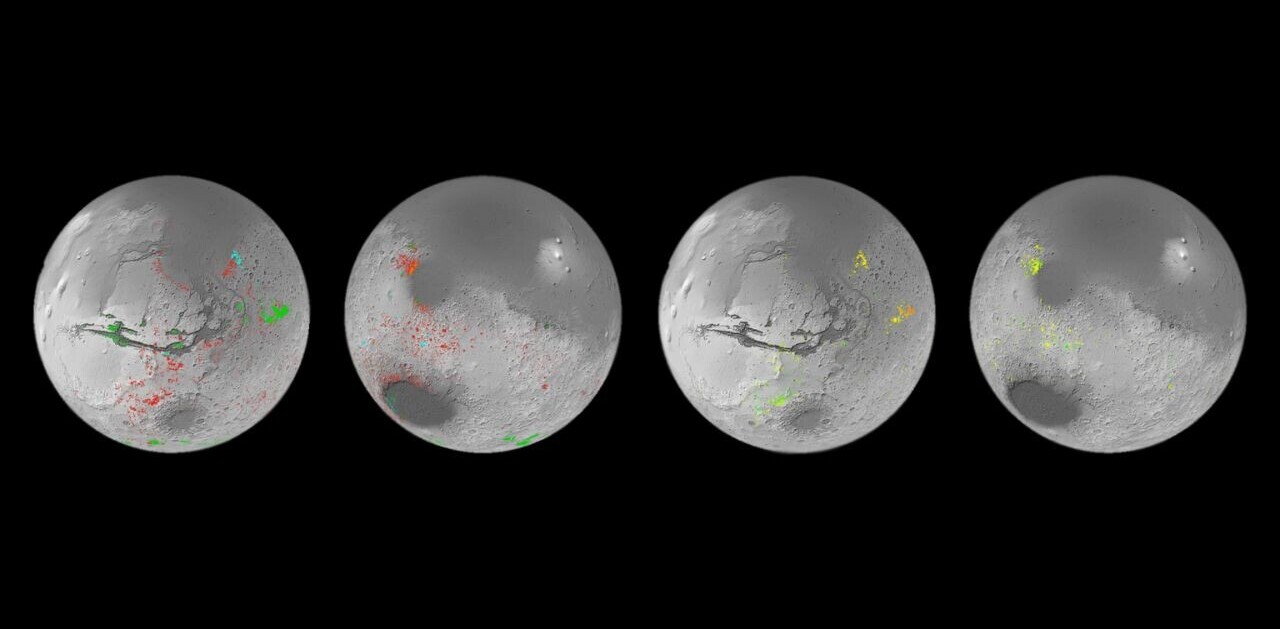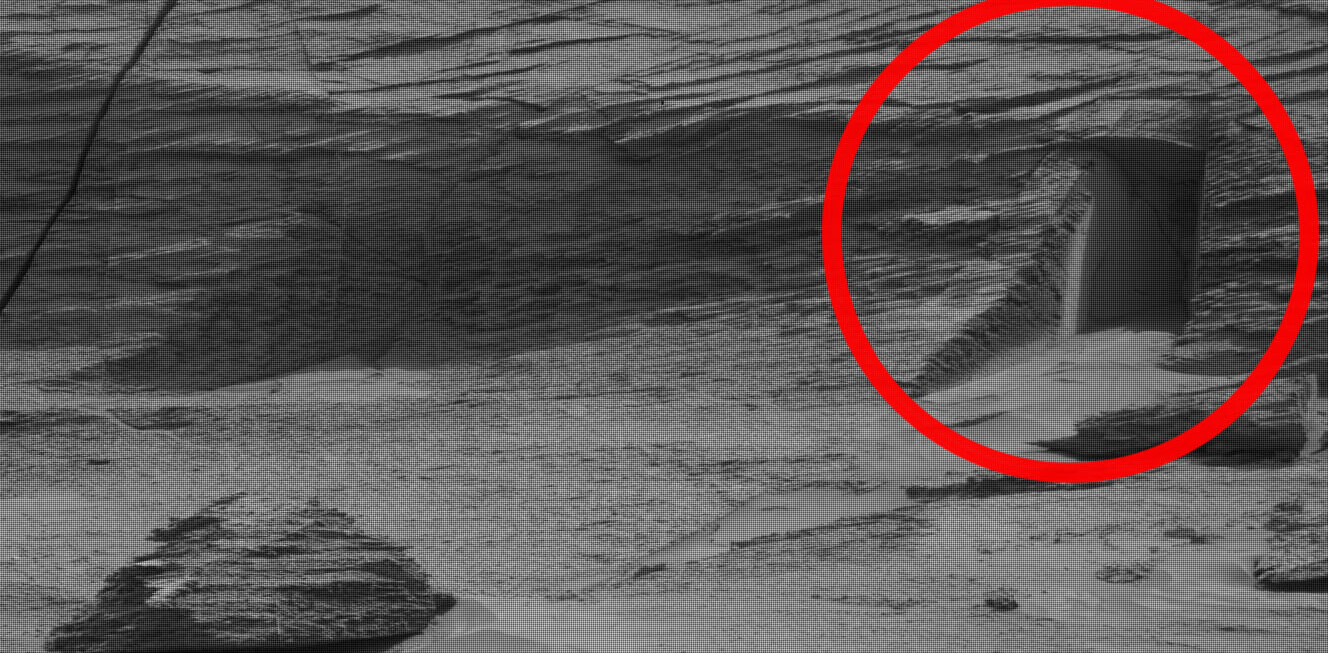
The discovery of bacteria inside rocks under the ocean surface suggests life on Mars may be more likely than previously believed. If these microscopic beings could thrive in these conditions on Earth, researchers theorize, lifeforms may have also formed within similar structures on the Red Planet.
The bacteria were found inside thin cracks in rocks recovered from under the ocean floor beneath the Pacific Ocean. The team which made the finding believes the cracks could host collections of bacteria as rich and diverse as the human gut — roughly 10 billion cells per cubic centimeter (0.06 cubic inches). This is 100 million times as dense as the average distribution of bacteria on the ocean floor in the region where samples were collected.

The bacteria were found inside thin cracks in rocks recovered from under the ocean floor beneath the Pacific Ocean. The team which made the finding believes the cracks could host collections of bacteria as rich and diverse as the human gut — roughly 10 billion cells per cubic centimeter (0.06 cubic inches). This is 100 million times as dense as the average distribution of bacteria on the ocean floor in the region where samples were collected.
“I am now almost over-expecting that I can find life on Mars. If not, it must be that life relies on some other process that Mars does not have, like plate tectonics,” Yohey Suzuki, Associate Professor at the University of Tokyo, stated.
I wanna rock!
Lava erupts from underwater volcanoes at temperatures reaching 1,200 degrees Celsius (2,200 Fahrenheit). This material cools in the chilly water, forming rocks, filled with tiny cracks. Over the course of millions of years, these fissures (up to 1 mm or 1/25 inch across) fill with clay, much like that used to create pottery. Bacteria soon find their way into the clay, where they can multiply, blooming into large colonies.
The samples were collected from the waters of the South Pacific in late 2010 during the Integrated Ocean Drilling Program (IODP). The expedition team collected core samples from three locations between Tahiti and New Zealand.

“The ancestral microbes probably entered with seawater flowing through the fractures in the basalt. The clay formed in place, from alteration of the basalt. Typical oceanic basalt is about 15% fracture when it’s young. Seawater flows continuously through these fractures. As secondary minerals (like clay) grow in the fractures, the fracture volume decreases. Despite this mineral growth, some fractures remain open enough for seawater flow through the basalt to continue for many tens of millions of years (for the entire 100+-million-year lifetime of the basalt in our study),” Dr. Steven D’Hondt of the University of Rhode Island, who headed the Pacific expedition, explained to The Cosmic Companion.
The mission was equipped with a drill connected to a metal tube 5.7 kilometers (3.5 miles) long. The drill cut through as much as 125 meters (410 feet) of material beneath the ocean floor. Sample cores, 6.2 cm (2.4 inches) across, revealed roughly 75 meters (245 feet) of sediment above 44 meters (130 feet) of solid rock.
“The upper oceanic crust is mainly composed of basaltic lava. It has been continuously created on Earth for ~3.8 billion years. Basaltic lava is erupted and solidified at mid-ocean ridges where high-temperature basalt-seawater reactions provide substantial energy for sustaining chemosynthetic life,” researchers describe in Communications Biology.

Analysis revealed a wide range of ages for the trio of samples. One core was found to be 13.5 million years old, while a second was 20 million years older than that. The oldest of the samples was shown to have formed 104 million years before our time.
Each core was collected from regions well spaced from hydrothermal vents or water channels beneath the seafloor. This positioning would help ensure that bacteria found in clays within the samples formed naturally within the fissures.
“These cracks are a very friendly place for life. Clay minerals are like a magic material on Earth; if you can find clay minerals, you can almost always find microbes living in them,” explained Suzuki.
Before being processed for study, the outside of each core sample was sterilized using a wash of artificial seawater and a fast burn, similar to the way a chef might flame-sear food.
The green machine
A decade ago, researchers examining core samples would have chipped away at the outer layer of the sample column, and crushed the material found in the inner regions of the core. Cells within the crushed rock would then be counted.
Initial analysis of the samples did not reveal the presence of bacteria far beneath the ocean floor.
“Microbial cell counts are lower than at all sites previously drilled. Countable cells disappear with increasing depth in the sediment at every site in the South Pacific Gyre,” researchers described in 2011.
Geologists, chemists, and biologists spent more than a decade developing and refining new methods of testing.
Finding inspiration from the way thin slices of body tissue are prepared for investigation, Suzuki prepared thin slices of core samples, using special epoxy to hold the pieces together. The samples were then treated with dye staining the DNA, and the samples were examined utilizing a variety of microscopes.

The team found aerobic bacteria shining as green spheres, packed together into luminous orange tubes, the telltale structure of clay. Investigators suggest that these tunnels could concentrate nutrients that bacteria use for fuel, making them an attractive home for the microorganisms.
The DNA of bacteria within the clay structures were also examined in detail. Researchers found a variety of bacterial species, unique to each of the three locations from which samples were obtained. Researchers suggest that the ages of the rock samples may have played a role in guiding the proliferation of different species at each locale.
This study suggests that microscopic lifeforms on Mars might also concentrate in similar structures, providing a welcome home for bacteria in the harsh Martian environment. The NASA video below shows organic materials have been discovered in ancient rock formations on Mars by the Curiosity rover.
“Minerals are like a fingerprint for what conditions were present when the clay formed. Neutral to slightly alkaline levels, low temperature, moderate salinity, iron-rich environment, basalt rock — all of these conditions are shared between the deep ocean and the surface of Mars,” said Suzuki.
A 2017 study suggested methanogens — one of the oldest forms of life on Earth, using carbon dioxide and hydrogen to survive— could thrive in the low-pressure atmosphere of Mars.
“In all the environments we find here on Earth, there is some sort of microorganism in almost all of them. It’s hard to believe there aren’t other organisms out there on other planets or moons as well,” Rebecca Mickol, astrobiologist at the University of Arkansas and lead researcher on the methanogen study, stated.
Although Mars has a harsh environment, it still remains one of the most likely places in the Solar System to find alien life. Now, we know to look inside tiny clay tunnels to find where extraterrestrial organisms might still be hiding.
This article was originally published on The Cosmic Companion by James Maynard, an astronomy journalist, fan of coffee, sci-fi, movies, and creativity. Maynard has been writing about space since he was 10, but he’s “still not Carl Sagan.”You can read this original piece here.
Astronomy News with The Cosmic Companion is also available as a weekly podcast, carried on all major podcast providers. Tune in every Tuesday for updates on the latest astronomy news, and interviews with astronomers and other researchers working to uncover the nature of the Universe.
Get the TNW newsletter
Get the most important tech news in your inbox each week.




